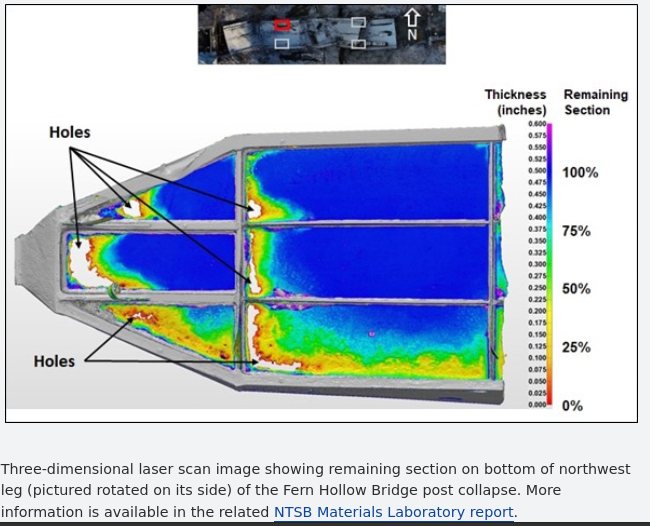thread815-491466
NTSB to other bridge owners:
"Rust makes metal weaker."
NTSB to other bridge owners:
"Rust makes metal weaker."
Follow along with the video below to see how to install our site as a web app on your home screen.
Note: This feature may not be available in some browsers.
Littleinch said:I meant a bit unfair to ascribe to the NTSB a simplistic comment like that.
NTSB Report said:However, as with any other steel, failure to properly maintain uncoated weathering steel can lead to corrosion damage,deterioration, and section loss in critical components, thus reducing the safety and service life of the bridge.
LittleInch said:I meant a bit unfair to ascribe to the NTSB a simplistic comment like that.

Proposed directive (spsalso) said:Bridge owners, or their representatives, shall read and act on bridge inspection reports.
[URL unfurl="true" said:https://www.fhwa.dot.gov/bridge/nbis.cfm[/URL]]The National Bridge Inspection Standards (NBIS) are the standards established over the safety inspections of highway bridges on public roads throughout the United States. The U.S. Congress originally required the Secretary of Transportation to establish these standards in 1968. The original NBIS was published in 1971, creating our Nation's first nationally coordinated bridge inspection program.



